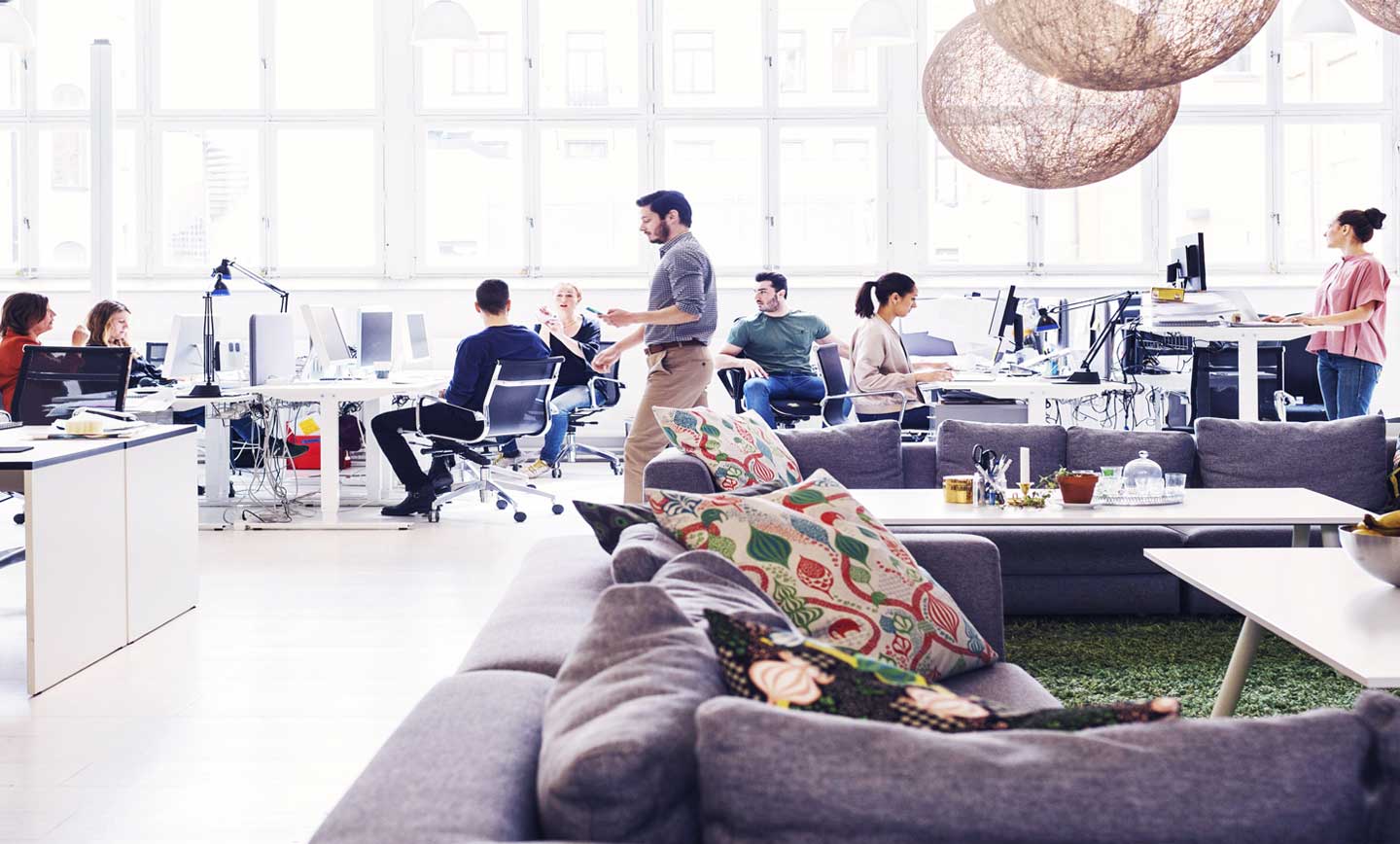Here’s how we’re unlocking the future of work
Discover why collaboration, infrastructure and security are key to hybrid working success.
- Company
- BT
- Industry
- Telecommunications
- Employees
- more than 100,000
- Location
- Global

Overview
Hybrid work is here. Across the globe, organisations are resetting their workplace strategy. And we’re no different. From the iconic BT Tower to our many locations worldwide, we’ve transformed the way they’re set up to better reflect that our people now split their time between working at home, in the office and on the go.
The challenge
Our workspaces no longer worked. The pandemic accelerated a shift towards fewer of our people working in the office every day. But when they did come in more of them also wanted to work together. This meant we had lots of empty desks, but not enough meeting rooms. While our older buildings lacked the right tech set-up to easily include remote workers in meetings too.
We decided to reduce our location portfolio and move to more modern facilities. But we also wanted to make sure our IT strategy was right for the way we worked now. This included making the most of collaboration tools like Microsoft Teams, deploying omnichannel scheduling and better ways of booking and managing rooms. With more of our people working online, we also wanted to step up our security – but without sacrificing user experience.
The road to hybrid working is littered with obstacles and wrong-turns. There’s no silver bullet solution but, based on our own experience, we’ve discovered some golden rules and focal areas which will help guide the way for our customers.”
The solution
No two businesses are the same. And the same goes for hybrid working set-ups. Each one should be tailored to an organisation’s needs, helping people do their jobs brilliantly.
We started with a prioritisation exercise – we knew we had to care about a security policy based on both device and network-level cases and simple, seamless at-desk experiences – which led to the deployment of device upgrades and single-sign-on technology.
We mainly applied five ways to harness technology and power up through proper planning:
- Making hybrid working work business-wide
To make sure our new workplace would work for everyone, we didn’t create our IT strategy in isolation. We brought together stakeholders from across the organisation to discuss it. This helped us identify and fix potential problems and make sure our plan supported wider business initiatives.
This collaborative approach meant we could also share knowledge. For instance, our head of HR helped our IT team better understand our people's needs. Key to this was also the delivery of a user adoption programme covering the right user communications, education and training.
- A better experience whether they’re in the room or on Zoom
Hybrid working is not the same as flexible working. It doesn’t just mean our people can pick and choose when they come into the office. It’s about completely reimagining how we approach work, so everyone can work just as well whether they’re in the office or at home. We upgraded our workplace LAN and wi-fi, making it easier for everyone in the office to stay connected and collaborate online. And we've enhanced our meeting rooms with directional speakers and improved cameras. So that remote workers can get just as involved in meetings as those physically there.
- Giving our people the freedom to work the way they want
With work now split across locations, teams are connecting more and more in the cloud. In fact, the average person now uses three and a half collaboration tools and a third of us use six. That’s why we offer our people a choice of platforms – Zoom, Cisco and Microsoft Teams – that can integrate through Session Layer. So individuals can choose which one they prefer, but teams can still work together from anywhere.
- Connectivity you can count on
We noticed that more of our people were choosing to work from home when they had a specific job to focus on. While our workspaces were being used for team meetings and collaborative projects. So we've ditched solitary desks in favour of more meeting rooms and breakout areas.
To make sure our connectivity never slows down collaboration, we've also rolled out an SD-WAN in all our corporate offices. This prioritises critical apps and traffic, so our people enjoy the best performance. We've also established direct peering with our major cloud providers, reducing latency and lag time when using online tools. - Working anywhere means staying secure everywhere
There was a 400% increase in the number of email attacks in 2020. While many cybercriminals tried to exploit the pandemic confusion and target those working from home. To make sure our people and business data remain safe, we're embedding security more deeply into our network. This makes it easier for us to spot shadow IT as well as react faster to threats. But doesn’t impact the user experience and allows our people to work smoothly as ever.
The result
We now have a clear global workplace strategy. This gives us a better user experience, seamless collaboration and smarter employee services. All of which is improving our productivity as we roll it out across our sites. This new approach also allows us to recruit and retain diverse teams and have a more inclusive workforce, which will drive innovation in our organisation.
Our hybrid working approach also gives us happier employees, cost efficiencies and sustainability benefits as we reduce our carbon footprint through fit for purpose technology.



